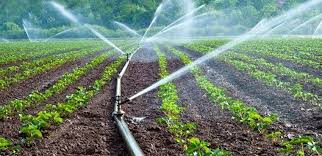Watermelon glut pushes prices down 25pc

DAR ES SALAAM: A glut of watermelons across the country has led to a sharp fall in prices, with traders reporting an oversupply in major markets that has pushed prices down by about 25 per cent.
At the Veterinary Market in Temeke, Dar es Salaam, the chairman, Athumani Bakari, attributed the glut to heavy harvests in key producing regions such as Pwani, Morogoro and Dodoma, where farmers benefited from favourable weather conditions.
“The price drop has been caused by increased harvests in major producing regions.
“Farmers produced more this year because of good rainfall and improved seeds, but demand has not grown at the same rate, leading to oversupply and reduced prices,” he said yesterday.
The market, the largest in the country, currently receives between 10 and 15 truckloads of watermelons daily. Each truck carries between 8,000 and 10,000 small-sized melons, while large ones number between 3,500 and 4,000 per day.
ALSO READ: Tanzania names Korea among its development partners for 2025-30
Additionally, the chairman said that the involvement of more people, especially those who had been unemployed, in watermelon farming had contributed to the glut.
“Productivity has increased, but consumers have remained constant. The market should be expanded to absorb the excess supply,” Mr Bakari said.
Traders at the market shared similar views, pointing to the growing glut that has pushed prices down.
One of the traders, Haji Mkwawa, who has been selling watermelons for several years, said the market is flooded.
“Farmers are producing more, but we can’t sell all the fruits because of low purchasing power.
“The market is flooded with fruits and customers are few, so our profit has dropped sharply compared to last season,” he said.
According to Mkwawa, a large watermelon that sold for between 8,000/- and 10,000/- last year now goes for between 5,000/- and 6,000/-.
A trader at the same market, Ally Ngurungu, said business has slowed compared to last year, as fewer customers are coming to buy.
“May be people’s pockets are tight and we’re making very little profit. Things have become even harder during this election period when many are struggling financially,” he said.
A farmer from Morogoro, Mjaliwa Said, said poor marketing structures continue to hurt farmers despite the glut.
“We face repeated losses due to poor marketing strategies. There is no strong export plan; we only sell to local markets where prices change every day,” he said over the phone.
While overall production has risen, the absence of formal market systems and limited export opportunities have left farmers and traders struggling to sustain profit margins.





